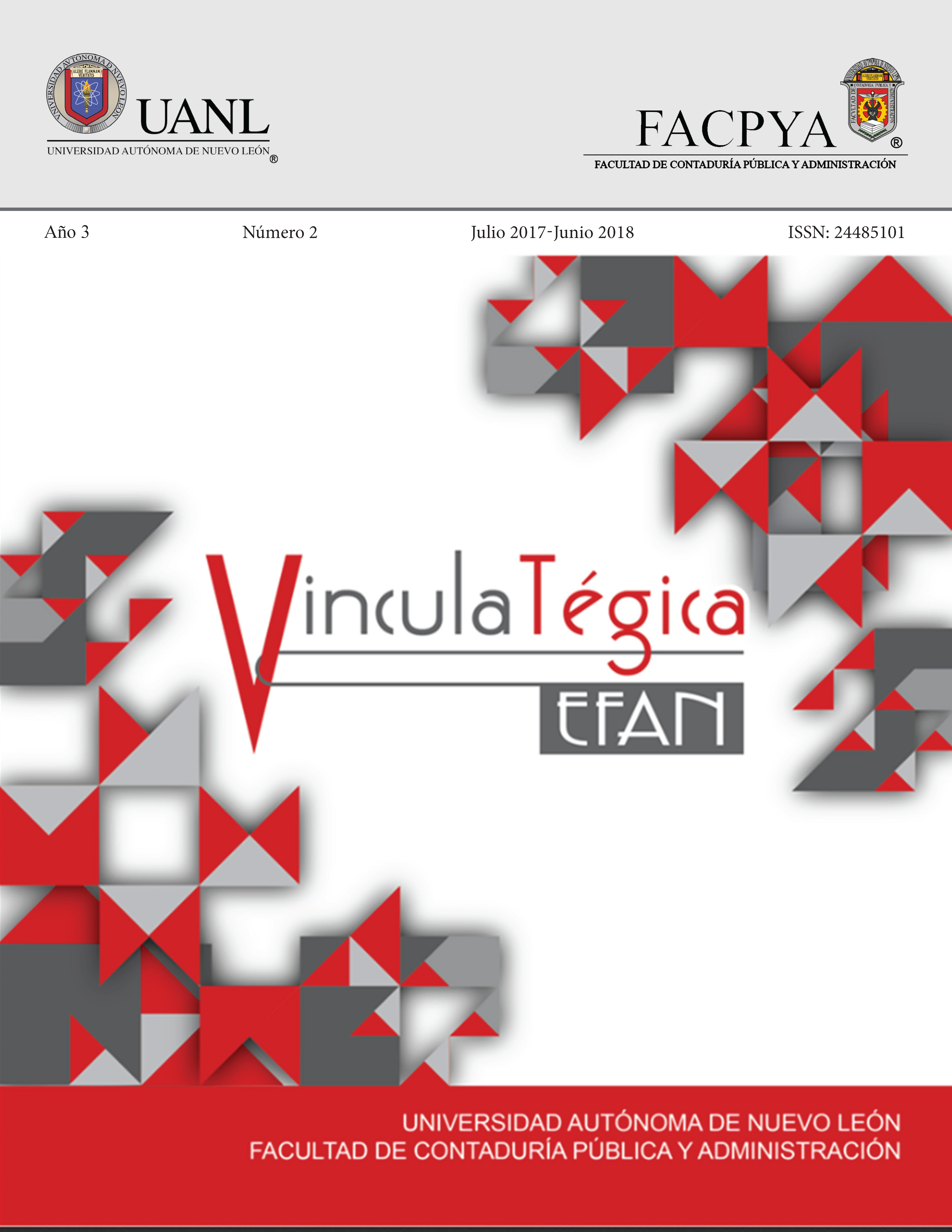Global Competitiveness Model for the Automotive Industry
Keywords:
Competitiveness, Automobile Industry, ModelAbstract
The automotive industry is represented by ten global powers, each accounting for more than 50% of the total motor vehicles produced worldwide. Countries such as Germany, Japan, China, the United States, and South Korea are the dominant ones. In economic terms, the automotive industry (AI) produces 95.6 million cars and represents US$2.9 trillion, which is vital to the progress of the global economy. This article focuses its research on determining the relevant competitive pillars of the leading economies in the automotive industry to determine the factors that enable these countries to achieve industrial competitive leadership. Using the global competitiveness methodology and its indices, it was found that the domestic market pillar is decisive for achieving such leadership, something that will be discussed extensively in the article.
Downloads
References
AAPC. (2015). State of the U.S Automotive Industry 2015. AAPC, 1(July), 30.
Anil Bhat, S. K. S. (2014). Supply chain risk management dimensions in Indian automobile industry. Benchmarking, 21(6), 1023. http://doi.org/doi:10.1108/BIJ-02-2013-0023
Chares River Associates. (2001). Competitiveness Factors For Attracting and Maintaining Automotive Investment: Comparison between Canada and Mexico. The Ontario Ministry of Economic Development and Trade, 1(1), 50.
Chikán, A. (2008). National and firm competitiveness: a general research model. Competitiveness Review: An International Business Journal Incorporating Journal of Global Competitiveness, 18(1/2), 20–28. http://doi.org/10.1108/10595420810874583
Cho, Y. J., Leem, C. S., & Shin, K. T. (2008). The relationships among manufacturing innovation, competitiveness, and business performance in the manufacturing industries of Korea. International Journal of Advanced Manufacturing Technology, 38(7–8), 840–850. http://doi.org/10.1007/s00170-007-1107-8
Deloitte Touche Tohmatsu Ltd. (2015). Mexico ’ s growth drivers over the next 25 years Competitiveness : Catching the next wave. Deloitte Special Report, 1(1), 2015.
Di Bitonto, S. (2013). The Automotive Industry in Germany. Germany Trade & Invest, 14.
Gao, P., Kaas, H.-W., Mohr, D., & Wee, D. (2016). Disruptive trends that will transform the auto industry. McKinsey & Company, 1(January), 1–9. Retrieved from http://www.mckinsey.com/industries/high-tech/our-insights/disruptive-trends-that-will transform-the-auto-industry?cid=other-eml-alt-mip-mck-oth-1602
Giuli, M. (2013). The Competitiveness of the European Automotive Industry. ECB CompNet Workshop, (December), 12–13.
Hirsh, E., Jullens, J., Wilk, R., & Singh, A. (2016). 2016 Auto Industry Trends. Strategy&, 1(1), 16. http://doi.org/http://www.strategyand.pwc.com/trends/2016-auto-industry-trends
Jin, Y. (2007). China´s Car Industry Competition Map. Business Schoool of Hohai University, 1(1), 1–8.
Mestres, J. (2016). The future of industry in Spain. CaixaBank Research, 2014(November), 2015–2016.
Meyer, M. (2016). Global Automotive Executive Survey 2016. KPMG International, 1(1), 1–52. Retrieved from https://home.kpmg.com/xx/en/home/insights/2015/12/kpmg-global-automotive-executive-survey-2016.html
Oh, I., Lee, J. D., Hwang, S., & Heshmati, A. (2010). Analysis of product efficiency in the Korean automobile market from a consumer’s perspective. Empirical Economics, 38(1), 119–137. http://doi.org/10.1007/s00181-009-0258-x OICA. (2017).
OICA Automobile Industry Data Sheet. International Organization of Motor Vehicle Manufacturers, Www.oica.net, 12(3), 1–135. Retrieved from http://www.oica.net
Perez, F., Moya, C., & Gallegos, B. (2015). Competitiveness: Catching the next wave Mexico. Deloitte Special Report, 12(4), 26.
Pérez, J. M. (2012). The Automobile Industry in Latin America : Assessment of the conditions for sustainable development. Boletín de La Escuela de Graduados de La Universidad de Soka, 34, 73–98.
Porter, M. (1985). Competitive Advantage - Creating and Sustaining Superior Performance. New York: FreePress. http://doi.org/10.1182/blohttp://94.236.206.206/dohodi.net/books/en/Business%20Books/Michael%20Porter/Michael.Por ter.-.Competitive.Advantage.pdfod-2005-11-4354
Quadros, R., & Consoni, F. (2009). Innovation capabilities in the Brazilian automobile industry: a study of vehicle assemblers’ technological strategies and policy recommendations. International Journal of Technological Learning, Innovation and Development, 2(1/2), 53. http://doi.org/10.1504/IJTLID.2009.021956
Shwab, K. (2016). The Global Competitiveness Report 2016–2017. World Economic Forum Reports. http://doi.org/92-95044-35-5
Singh, R. K., Garg, S. K., & Deshmukh, S. G. (2007). Strategy development for competitiveness: a study on Indian auto component sector. International Journal of Productivity and Performance Management, 56(4), 285–304. http://doi.org/10.1108/17410400710745315
Sledge, S. (2005). Art. Does Porter´s Diamond Hold in the Global Automotive Industry.pdf. Retrieved from http://search.proquest.com/openview/0ff1d94e3d8bbfc584c52f758db66289/1?pq-origsite=gscholar&cbl=32907
STC. (2014). The Brazilian Automotive Supplier Report. The Swedish Trade and Invest Council, 1(1). Retrieved from http://search.ebscohost.com/login.aspx?direct=true&db=bwh&AN=201401281113PR.NEWS.USPR.BR54073&site=eho st-live
Taufan, A., Putra, G., Sun, E., Tsai, J., Hu, Y., & Sugimoto, Y. (2016). The Japanese Automotive Cluster. Microecnomics of Competitiveness, 1(2), 30.
Wang, H. (2008). Innovation in product architecture - A study of the Chinese automobile industry. Asia Pacific Journal of Management, 25(3), 509–535. http://doi.org/10.1007/s10490-007-9084-x
Downloads
Published
How to Cite
Issue
Section
License

This work is licensed under a Creative Commons Attribution 4.0 International License.
a). Authors keep copyright and give the journal the right of the first publication of the work under a Creative Commons attribution license. This license allows others to share the work as long as original authorship and initial publication in this journal is acknowledged.
b). Authors may make other independent and additional contractual agreements for the non-exclusive distribution of the version of the article published in this journal (e.g., include it in an institutional repository or publish it in a book) as long as they clearly indicate that the work was published for the first time in this journal.







